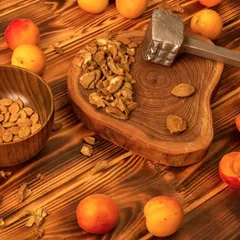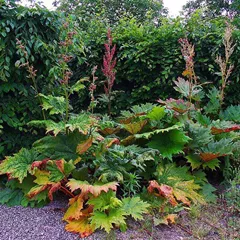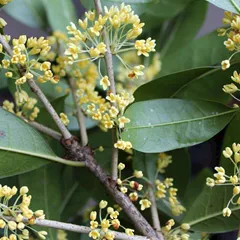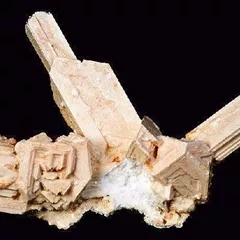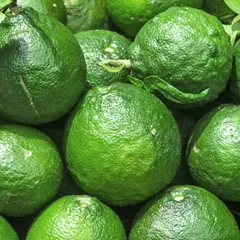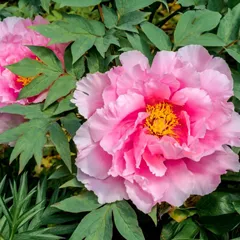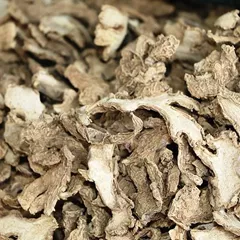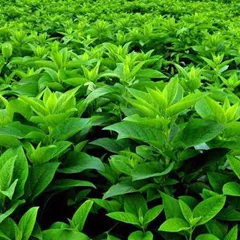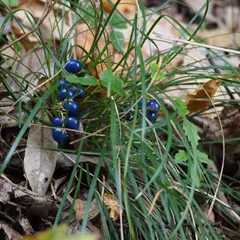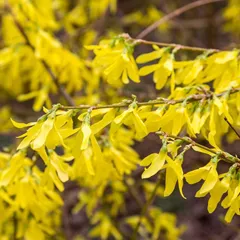Tiao Wei Cheng Qi Tang
Tiao Wei Cheng Qi Tang
Chinese: 调胃承气汤
Pinyin: Tiào Wèi Chéng Qì Tāng
Other names: Regulate the Stomach and Order the Qi Decoction
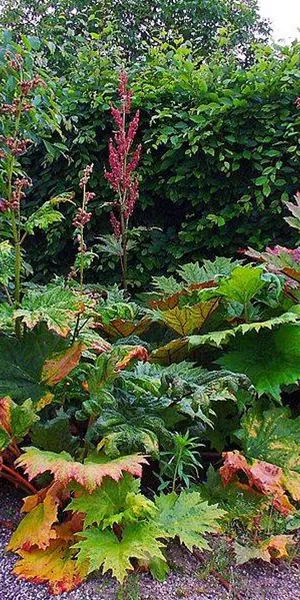
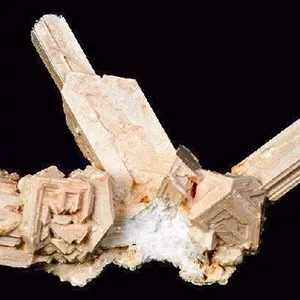
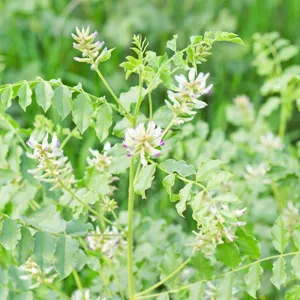
Tiao Wei Cheng Qi Tang
Tiao Wei Cheng Qi Tang
Chinese: 调胃承气汤
Pinyin: Tiào Wèi Chéng Qì Tāng
Other names: Regulate the Stomach and Order the Qi Decoction
Number of ingredients: 3 herbs
Formula category: Formulas that purge Heat accumulation
- Removes Heat and Dryness in the Lower Burner
- Removes constipation
Source date: 220 AD
Source book: Discussion of Cold Damage
The information provided here is not a replacement for a doctor. You shouldn't use it for the purpose of self-diagnosing or self-medicating but rather so you can have a more informed discussion with a professional TCM practitioner.
Tiao Wei Cheng Qi Tang is a 3-ingredient Chinese Medicine formula with Rhubarb (Da Huang) as a principal ingredient.
Invented in 220 AD, it belongs to the category of formulas that purge Heat accumulation. Its main actions are: 1) removes Heat and Dryness in the Lower Burner and 2) removes constipation.
On this page, after a detailed description of each of the three ingredients in Tiao Wei Cheng Qi Tang, we review the patterns and conditions that Tiao Wei Cheng Qi Tang helps treat.
The three ingredients in Tiao Wei Cheng Qi Tang
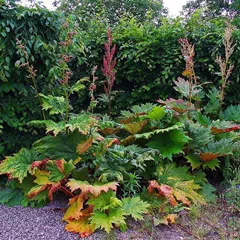
Da Huang is a king ingredient in Tiao Wei Cheng Qi Tang. Like the name indicates, it means it has more power than other ingredients in the formula.
1. Rhubarb (Da Huang)
Part used: Dried root and rhizome
Nature: Cold
Taste(s): Bitter
Meridian affinity: SpleenStomachLarge intestineLiverPericardium
Category: Purgative herbs that drain downward
Da Huang breaks up abdominal masses, accumulations, lingering fluids, and harbored food by flushing them from the Stomach and Intestines
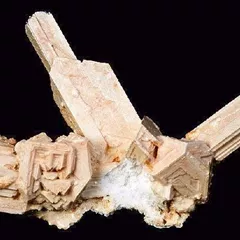
Mang Xiao is a deputy ingredient in Tiao Wei Cheng Qi Tang. This means it helps the king ingredient(s) treat the main pattern or it serves to treat a coexisting pattern.
2. Mirabilites (Mang Xiao)
Part used: The rock crushed as a powder
Nature: Cold
Meridian affinity: StomachLarge intestine
Category: Purgative herbs that drain downward
In general Mang Xiao's main actions are as follows: "Purges Stagnation in the Intestines caused by Heat and Dryness, Cools Heat and abates swelling"
In the context of Tiao Wei Cheng Qi Tang, it is used because it helps Da Huang moisten Dryness and drain downward.
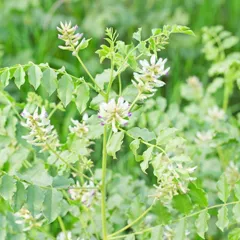
Gan Cao is an assistant ingredient in Tiao Wei Cheng Qi Tang. This means that it either serves to reinforces the effect of other ingredients or it moderates their toxicity.
3. Liquorice (Gan Cao)
Part used: Dried root and rhizome
Nature: Neutral
Taste(s): Sweet
Meridian affinity: HeartLungSpleenStomach
Category: Tonic herbs for Qi Deficiency
In general Gan Cao's main actions are as follows: "Tonifies the Basal Qi and nourishes the Spleen Qi. Clears Heat and dispels toxicity. Moistens the Lungsexpel phlegm and stop coughing. Relieves spasms and alleviates pain. Harmonizes and moderates the effects of other herbs."
In the context of Tiao Wei Cheng Qi Tang, it is used because it helps the other ingredients regulate and harmonize Stomach Qi by removing obstructions.
Conditions and patterns for which Tiao Wei Cheng Qi Tang may be prescribed
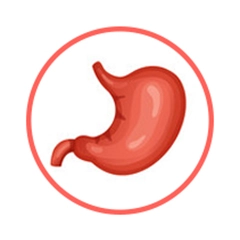
The Stomach is a so-called "Fu" Organ. Learn more about the Stomach in Chinese Medicine
Stomach Heat or Fire
Pulse type(s): Rapid (Shu), Slippery (Hua), Full (Shi)
Tongue coating: Yellow coating
Tongue color: Red centre
Symptoms: Acne Nausea Dry mouth Dry stools Bad breath Mouth ulcers Constipation Irritability Painful gums Restlnessness Bleeding gums Swelling gums Intense thirst Feeling of heat Constant hunger Excessive hunger Frontal headache Sour regurgitation Desire for cold drinks Burning epigastric pain Vomiting of fluids soon after drinking
Tiao Wei Cheng Qi Tang is sometimes prescribed by TCM practitioners to treat Stomach Heat or Fire. This pattern leads to symptoms such as burning epigastric pain, intense thirst, desire for cold drinks and restlnessness. Patients with Stomach Heat or Fire typically exhibit rapid (Shu), slippery (Hua) or full (Shi) pulses as well as Red in the center with a dry thick yellow or dark yellow coating.
Stomach Fire indicates a true Excess of Heat in the Stomach, creating symptoms such as mouth ulcers, bad breath, intense thirst as well as strong desire for cold drinks and foods. The Blood in the Stomach Channel get rebellious due to the extreme Heat or Fire, so that it leaks out of vessels and... read more about Stomach Heat or Fire

The Stomach is a so-called "Fu" Organ. Learn more about the Stomach in Chinese Medicine
Bright Yang Fire in Stomach and Intestines
Pulse type(s): Deep (Chen), Rapid (Shu), Slippery (Hua), Full (Shi)
Symptoms: Thirst Delirium Dry stools Dark Urine Constipation Irritability Abdominal pain Profuse sweating Sweating on limbs Abdominal fullness Burning sensation in the anus High fever that is worse in the afternoon
Tiao Wei Cheng Qi Tang is sometimes prescribed by TCM practitioners to treat Bright Yang Fire in Stomach and Intestines. This pattern leads to symptoms such as high fever that is worse in the afternoon, profuse sweating, sweating on limbs and abdominal fullness. Patients with Bright Yang Fire in Stomach and Intestines typically exhibit deep (Chen), rapid (Shu), slippery (Hua) or full (Shi) pulses.
Within the framework of the Six Stages theory, this is one of the two patterns of the Bright Yang stage (the second of the six stages). Within the Four Levels theory, this is one of the five patterns of the Qi level (the second of the four levels).
It corresponds to a penetration of an External... read more about Bright Yang Fire in Stomach and Intestines
Formulas similar to Tiao Wei Cheng Qi Tang
Tao He Cheng Qi Tang is 60% similar to Tiao Wei Cheng Qi Tang
Da Cheng Qi Tang is 50% similar to Tiao Wei Cheng Qi Tang
Da Huang Mu Dan Pi Tang is 40% similar to Tiao Wei Cheng Qi Tang
Wen Pi Tang is 40% similar to Tiao Wei Cheng Qi Tang
Zeng Ye Cheng Qi Tang is 40% similar to Tiao Wei Cheng Qi Tang
Liang Ge San is 38% similar to Tiao Wei Cheng Qi Tang

